Preliminary warning: The coronavirus Covid-19 pandemic still being quite volatile, things described in the page below may become inaccurate at a any moment. Just keep this in mind while reading this page.
You have probably heard of the Setouchi Triennale, you probably know that the last one took place in 2022 and that the next one will be held in 2025, but maybe you intend to visit the Setouchi area and Kagawa Prefecture this year when the art festival is not underway, and you are wondering if there is “anything” to see.
Well, I have good news for you, there is still a lot to see.
See, while the Setouchi Triennale is the biggest and most famous event in the area (or even beyond the area these days it seems), it’s actually part of a larger (but paradoxically lesser-known) endeavor called
Art Setouchi
While seen from the outside, the Setouchi Triennale and related activities are just about art on islands, the goal of the whole enterprise has a much larger scope. It’s about art on islands with the goal of revitalizing those rural areas in mind. The art festival that takes place every three years is obviously the main event, but it’s not the only one.
Throughout the year, various activities and events are held on the 12 islands that are part of Art Setouchi. Art is the main activity, but other cultural and social events take place too.
On this page, I will tell you what you can expect to find on the Setouchi islands in-between triennials as well as give you a few pieces of advice to make your visit as enjoyable as possible.
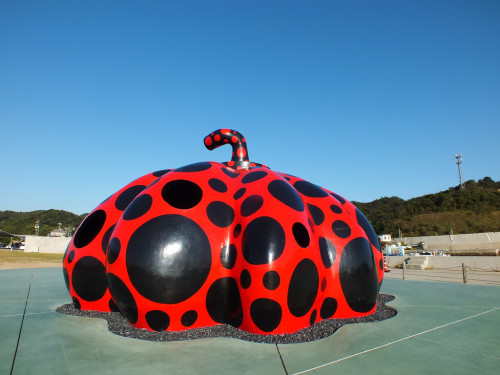
Art on the Setouchi Islands
Benesse Art and Islands
Before we go any further, you need to understand a little bit about how the art and the museums on the Setouchi islands are managed as different actors take part in the process. You may think it’s not useful information for visitors, but it will help you understand what you can and can’t do or see when visiting the area.
Let’s start with Naoshima because this is probably the place that you’ve heard about first. Naoshima is indeed the most famous island in the area, and it’s chronologically speaking the first one that has had art installed. The art on the island (with just a couple of exceptions) is owned and managed by Benesse Art Site Naoshima, a branch of the Fukutake Foundation. I’m not going to bore you with the details of their organigram, just know that locally we simply call it Benesse.
Benesse also owns and manages all of the artworks on Inujima as well as most (but not all) of the ones on Teshima. Usually, Naoshima, Teshima, and Inujima are colloquially referred to as the Benesse Islands.
It matters to you because those are the art sites that are pretty much open year-round and that you can visit whenever you come to the area. You can find the detail of each island in the online guide that I have made, or simply by clicking on the name of each island above.
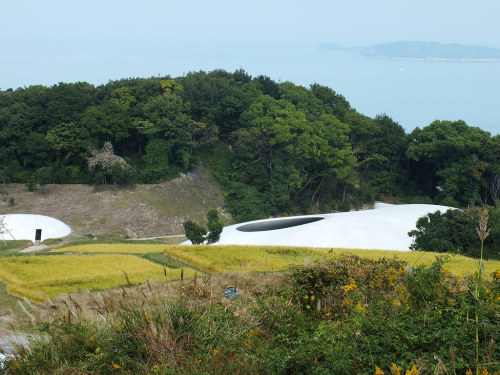
Art Setouchi Islands
However, contrary to what many outsiders think, the Benesse Islands are not the only places where you can find art in the area. The other nine islands that are part of the Setouchi Triennale also have artworks that you can visit outside of the festival.
Artworks on these islands have various owners (most of them belong to the Setouchi Triennale Executive Committee) and are managed by the committee with the help of the volunteers from Koebi-Tai who really are the people without whom none of this could be a reality.
The main islands that are part of Art Setouchi are:
- Ogijima
- Megijima
- Shodoshima
- Oshima
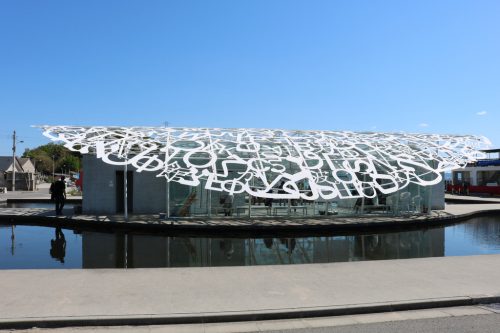
Some islands in the Western part of Kagawa Prefecture, namely Shamijima, Honjima, Takamijima, and Ibukijima, also have permanent artworks.
On these islands, art sites are usually open from mid-March to early November, on weekends and holidays (with a few variations here and there).
The exact dates will be available later (probably in March)
As these islands are not as famous as their Benesse-managed counterparts, some visitors tend to discount them when planning their trip to the Setouchi Area. It is a big mistake! Not only their art is quite interesting and very often fits in their environment and surroundings much better than the Benesse art usually does, but also, those islands will provide you with a much more genuine experience of what the islands of the Seto Inland Sea of Japan really are about and what life really looks like there.
You will find more details and more information about each island in the following guide. Just bear in mind that I write it by myself in my free time, so updates can sometimes be slow to arrive depending on how busy my offline life is at the moment. 🙂
Art Setouchi Events
Art Setouchi is not just permanent artworks and museums that you can visit, it’s also various sets of events taking place throughout the year. I can’t list them here as they take place irregularly and usually only once, but if you’re interested, may I invite you to join this Facebook group where useful information about them and more are posted.
Advice and Tips about Art Setouchi
Visiting Art Setouchi sites outside of the Setouchi Triennale can be both a similar and very different experience from doing it during the Triennale. It has some pros and cons. I’d divide them as such:
| Pros | Cons |
| – Smaller crowds (or even no crowd at all on some islands) – More relaxed atmosphere – A more genuine experience of what life on the islands is like | – Fewer artworks are available – Fewer opening days – No Art Passport (so it may turn out to be more pricey if you visit a lot of sites) |
Now, a few questions that you may have and my answers to them:
How to get there
If you’re already in Japan, the two main access points to the Setouchi Islands are the city of Takamatsu where the main ferry hub to the islands is located as well as Uno Port in Okayama Prefecture which also has ferries to some islands. For more specific access details to each island, please refer to the guide.
From abroad, know that Takamatsu Airport has flights to and from Seoul, Taipei, Hong Kong, and Shanghai. If you live near these airports you can get to Takamatsu in just a few hours, but even if you’re from somewhere else in the world, connecting to those cities may save you a lot of time (and money?) as you won’t have to make a detour to Tokyo. Another convenient way to come to Takamatsu is to land at Kansai Airport and then reach the city by coach (straight from the airport) or train (with a few correspondences).
Where to stay
While staying in a small inn or guesthouse on an island seems like the perfect idea, it is unfortunately not if you plan on visiting several islands. The problem is that, with a few exceptions, the islands are poorly connected to each other. So if staying a couple of nights on an island is a great idea, you may want to stay in Takamatsu (the only location that has ferries to all the islands in Eastern Kagawa) if you plan on visiting more islands or staying longer in the area (the rest of Kagawa Prefecture is also worth a visit). Unfortunately, I can’t really advise a hotel or a guesthouse above another. Travel apps will probably be more useful than me for this.
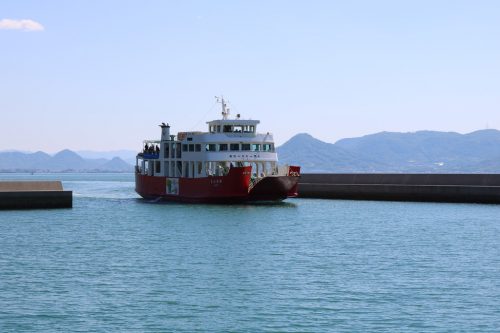
Is there any kind of Art Pass or Ferry Pass?
During the Setouchi Triennale, visitors can indeed buy Triennale Passports that give access to most art sites or Three-Day Ferry Passes, but no such things exist outside of the Triennale. You will have to pay for each paying art site individually, as well as for each ferry ride.
Concerning ferries, also know that you can’t make nor need to make reservations, and whatever train pass you have (such as JR Pass) is not valid for ferries. They are owned and managed by private companies that are totally independent of JR or anything else.
Getting around the islands
Each island has its own specificities, and you can see the details in the guide.
However, generally speaking, walking is the way to visit the smaller islands (Ogijima, Megijima, Oshima, and Inujima in the East and Ibukijima, Awashima, Takamijima, and Shamijima in the West).
Concerning the medium-sized islands (Naoshima, Teshima, Honjima) several options are offered to you. If you’re in good enough shape and the weather is nice, I’d advise you to rent bicycles. Otherwise, there are bus services on each of these islands. Bringing or renting a car may also be an option.
For Shodoshima, while bus services are available, they may not be the most convenient transportation if you plan on visiting different parts of the island on the same day, and bringing or renting a car is more than advised.
How much time for each island?
The keyword here is to take your time!
I always see so many people trying to rush from one place to the other trying to cram as many artworks – or worse – as many islands as possible in one day. It totally defies the purpose of visiting the area in my opinion. Just take your time. Do not go to the islands solely for the art. Discover the islands and what they have to offer in terms of landscapes, local culture, history, food, and more. You’re coming here to discover and learn about a new place, not to just take a bunch of pictures, post on Instagram and move on to the next destination (don’t get me wrong, I love Instagram, but it shouldn’t be the goal of your trip). Also while some islands only take a couple of hours to be visited, that doesn’t mean you can visit them all in one day, as you also must include the ferry rides (both the rides themselves and possible waiting times between two ferries) in your schedule. Sometimes it’s better to couple a small island visit with a visit within Takamatsu instead of going to another island on the same day.
With that being said, here is a rough estimate of how much time you can/should spend on each island.
- Naoshima: about one full day if it’s not crowded, a bit more if you want to see all the sites and you get there on a busy day.
- Teshima: one full day is alright to get a good first experience of the island, more to fully discover it.
- Inujima: a few hours are enough.
- Ogijima: the island is small and half a day may be enough, especially on a cold or rainy day. However, it’s also probably the most beautiful and interesting island in the area, and if you have good weather, I really advise you to discover all the island has to offer, including its nature, various cafés and such, and you may end up spending your entire day there (you’ll thank me later, or while you’re there if I am too).
- Megijima: a couple of hours are more than enough if you stay in the village, a little more if you explore the rest of the island.
- Oshima: a couple of hours.
- Shodoshima: discovering most of what Shodoshima has to offer may take close to a week. If you don’t have that much time, a couple of days will do, you’ll just have to make choices concerning what you’ll see on the island.
- Shamijima: a couple of hours.
- Honjima: around half a day.
- Takamijima: a few hours.
- Awashima: a few hours.
- Ibukijima: a few hours.
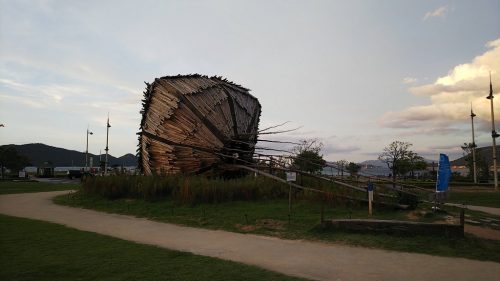
Other important things to know
Never forget that the islands are places of life, where people live and do all the things people usually do. They’re not some sort of amusement parks devoted to art, they’re not “art islands” as too many outsiders call them, they’re islands that happen to have art on them, but art is not their raison d’être even if it’s the reason you decided to go there.
So please, keep that in mind when you visit.
It especially means:
- Be polite and considerate to the locals, don’t ignore them; a smile, a nod, or a Konnichiwa will be greatly appreciated.
- Respect private properties, and do not enter people’s houses or courtyards.
- DO NOT LITTER! Keep your trash with you, this is the Japanese way of doing things (trash cans will be waiting for you when you’re back in Takamatsu Port). First, littering is wrong – anywhere you go – but more importantly, the islands cannot sustain the visitors’ trash. The quantity of the trash that the islands can handle is the quantity generated by the locals and nothing more. This a very important point that many urban foreign visitors have had trouble understanding because it’s usually not something they need to think about in their everyday life. It is on the islands.
- Public restrooms are rare. Keep that in mind when you’re on the islands, and use them when you see them, you don’t know where and when you’ll encounter the next one.
- Some streets, some buildings, and some areas, will be unpractical. The islands were not designed for visitors, and they’re not urban areas.
- If you’re not used to Japan, remember that there are many places in the country where shoes need to be taken off indoors. This is also true for many art sites, cafés, and such. Make sure to wear comfortable shoes that are easily taken off and on, it will make your visit much easier.
- If you visit in Summer, don’t forget that summers can be brutally hot in Japan, and the islands are no different. Stay hydrated, and wear hats and sunscreen. Heatstrokes among visitors happen too often as too many visitors underestimate the heat. You don’t want that to happen to you.
With that being said, I hope you’ll have a great time visiting Art Setouchi.
If you have any questions, know that the site also has a FAQ, or else you can ask on the Facebook group or contact me directly (I try to reply as fast as possible, but sometimes you’ll get a faster reply on the Facebook group, either from myself of another knowledgeable member.
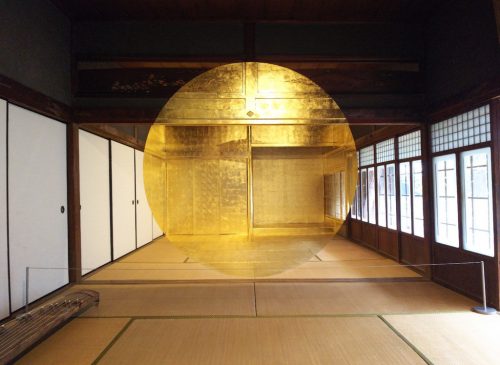
One final word
Finally, if you liked what you’ve read, found it useful, and would like to know how to thank me and support my work, you’ll have all the answers by clicking this link. Thanks in advance.
Discover more from Setouchi Explorer
Subscribe to get the latest posts sent to your email.